It's always more fun to DIY. Every week, we'll spare you a trip to the grocery store and show you how to make small batches of great foods at home.
Today: Marisa McClellan from Food in Jars walks us through the ins and outs of White Peach Jam.
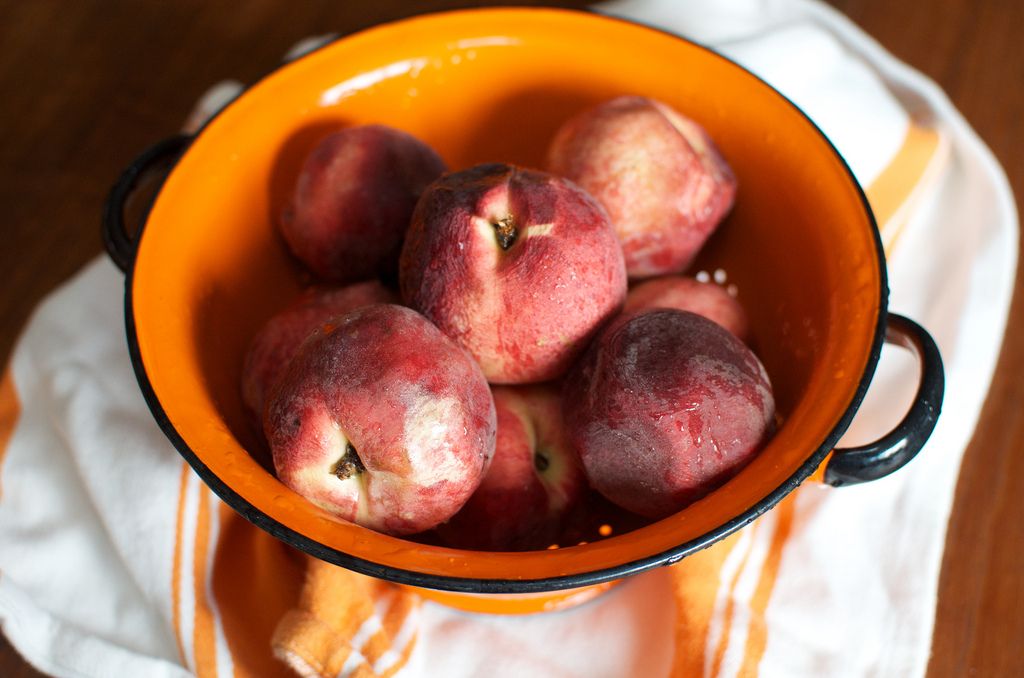
As a canner, it is nearly impossible to play favorites when it comes to fruit. How could I prefer raspberries to cherries, or choose apricots over melon? Every fruit is perfect and appealing in its own way, and each deserves its moment in the spotlight.
I will confess, however, that I am particularly fond of white peaches. They are sweet, juicy, and almost floral in fragrance. They have much less acid than their yellow siblings, so they pair nicely with delicate flavors like fresh cheeses and green tea.
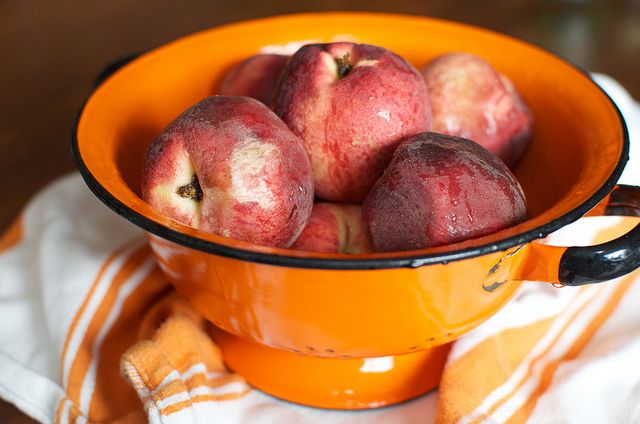
However, low acidity also makes them tricky to can. For a recipe to be safe for the boiling water bath, it needs to have a good deal of acid; this is what inhibits the growth of botulism spores. Happily, white peaches pair up beautifully with lemon, so it’s no hardship to stir a few tablespoons of acidic lemon juice into these preserves. I also add finely chopped lemon zest to the jam for additional flavor and texture.
Many canning experts will tell you that you have to use bottled lemon juice for safety reasons, but I have more than doubled the amount of juice required to ensure a harmless product. The increased volume makes up for any variation in acidity that the fresh lemon might present, and ensures a better flavor in the finished product.

A few notes:
I always cook small batches like this one in a stainless steel skillet. The low sides and wide surface area are ideal for quickly cooking the water out of the fruit. Make sure to choose a skillet that is non-reactive (like stainless steel or enameled cast iron). Bare cast iron or aluminum can react with the acid in the jam and cause a metallic flavor to leach into your preserves. I don’t recommend using non-stick, because high heat can sometimes damage the delicate surface.
This recipe makes just a single pint of jam. I canned mine in two half pint jars and I suggest you do the same. Even in the refrigerator, a honey-sweetened preserve will only be able to resist the ravages of mold for two to three weeks. If you’re particularly slow at working your way through jams, keeping the open portions small helps minimize waste.
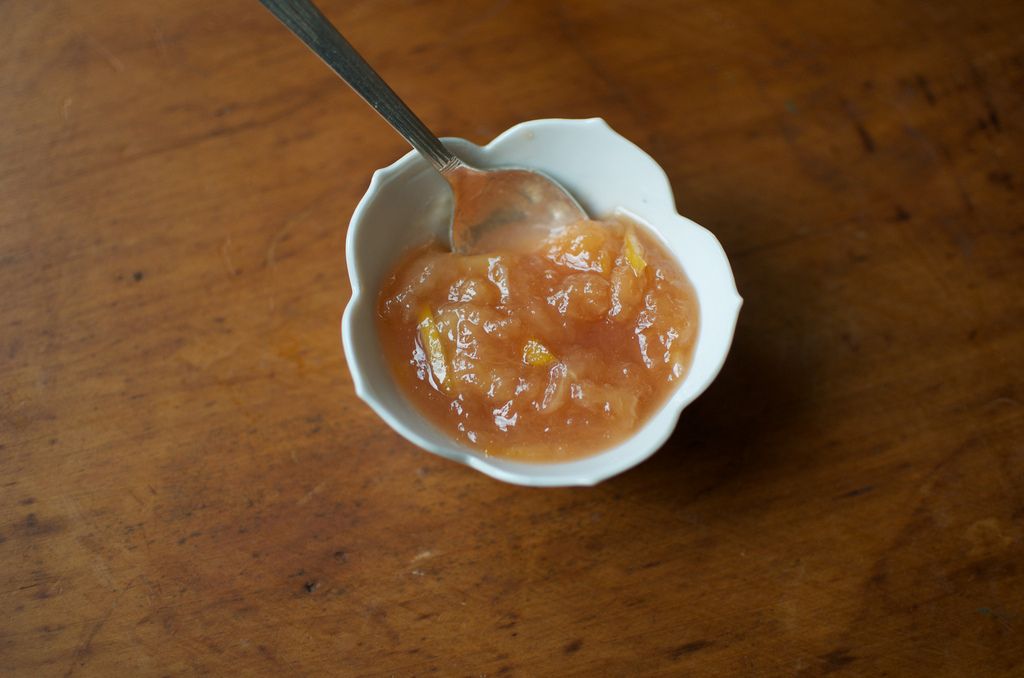
Honey-sweetened White Peach Jam with Lemon
2 pounds white peaches
8 ounces honey
1 lemon, scrubbed
Prepare a small boiling water bath canner and 2 half-pint jars. Place lids in a small saucepan and bring to a bare simmer.
Pit, peel, and chop peaches. You're welcome to score, blanch, and shock them, but for such a small batch I find that it's not worth cleaning an extra pot. Combine with honey in a small bowl and let sit until the honey dissolves into the fruit.
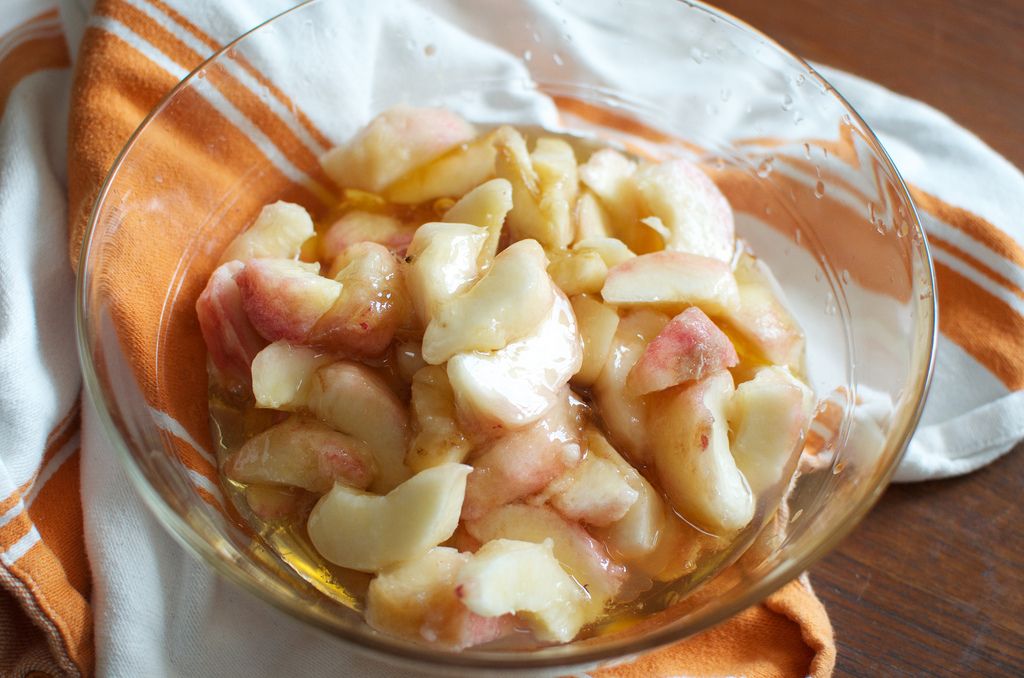
Using a vegetable peeler, remove the zest from the lemon in strips. Stack zest pieces on a cutting board and julienne them so that you end up with little confetti-sized slivers. Add zest to peaches. Cut the lemon in half and juice it into small bowl. Measure out three tablespoons and add them to the fruit.
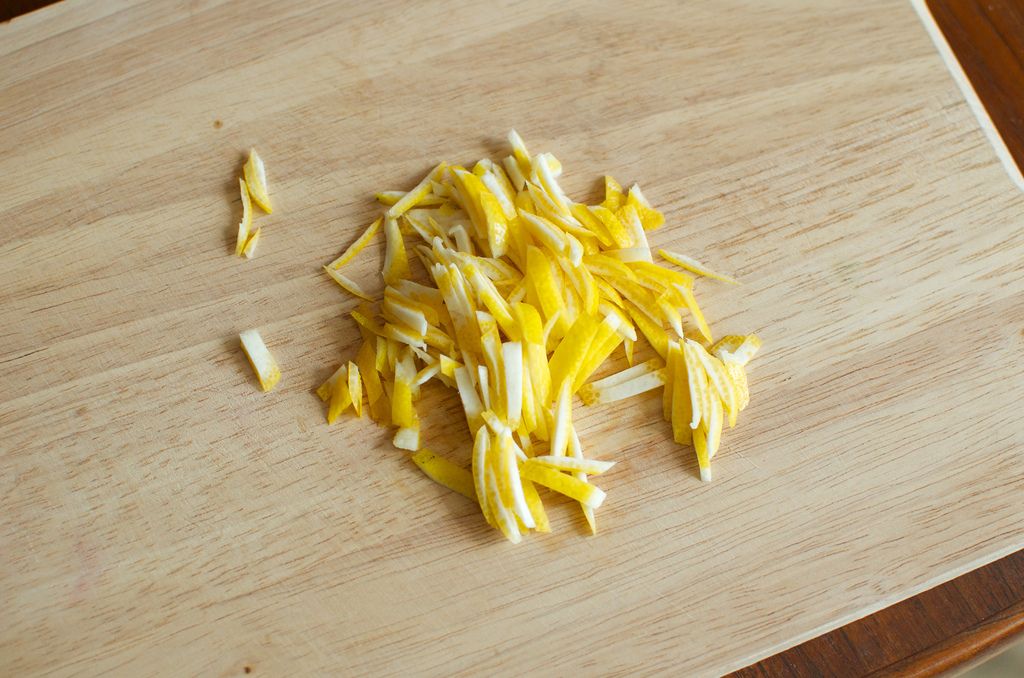
Scrape the peaches, honey,and lemon zest and juice into a 12-inch stainless steel skillet and place over high heat. Cook, stirring regularly, until the peaches soften, the liquid reduces, and the whole mixture becomes quite thick and spreadable, about 10 to 12 minutes.
If you like, during cooking, you can use a potato masher to help break down the peach pieces into more manageable bits. The jam is done when you can pull a spoon or spatula through it and the jam doesn’t immediately rush in to fill the space you’ve cleared. It will also become much splashier at the end of cooking.
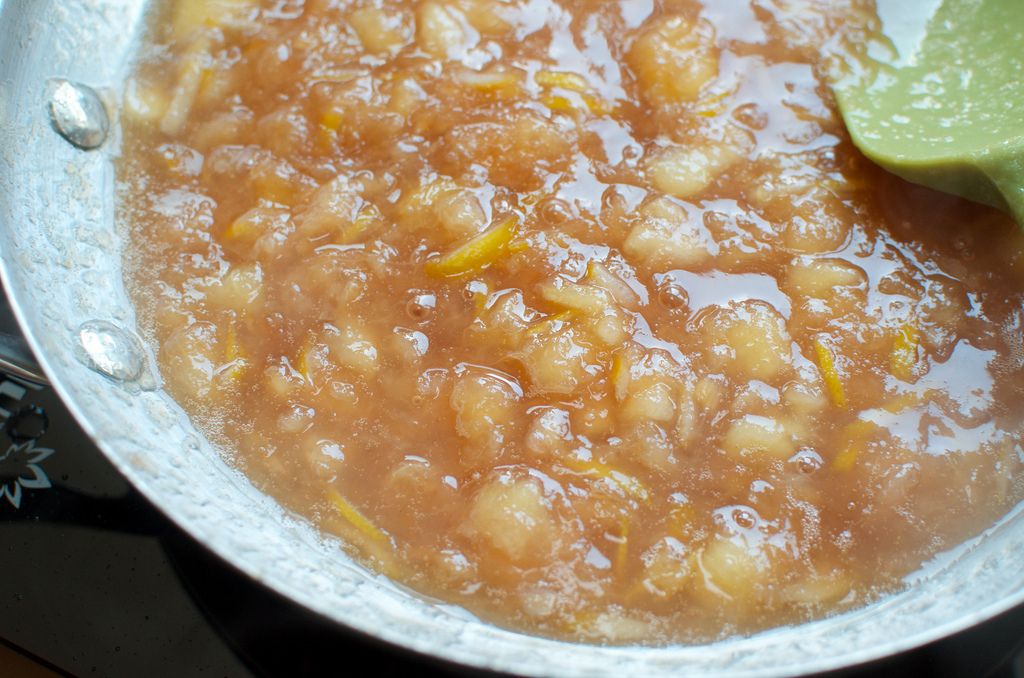
Remove your pan from the heat. Funnel jam into prepared jars. Wipe rims, apply lids and rings, and process in a boiling water bath canner for ten minutes.
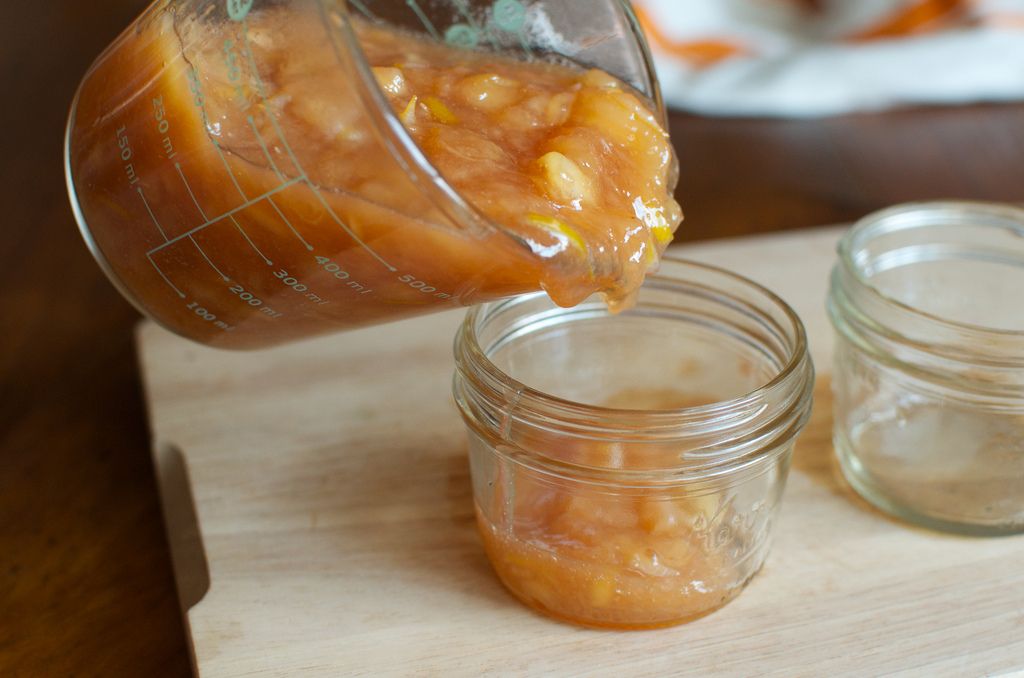
When your time is up, remove the jars from the canner and let them cool on a folded kitchen towel. When the jars are cool enough to handle, remove the rings and test the seals by grasping the edges of the ring and lifting the jar an inch or so off the countertop. If the lid holds fast, your seal is good. Sealed jars can be stored in a cool, dark place for up to one year.
Alternately, if you prefer to skip the boiling water bath process, the jam can simply be funneled into a jar after cooking and refrigerated once cool. It will keep for 2 to 3 weeks in the refrigerator.
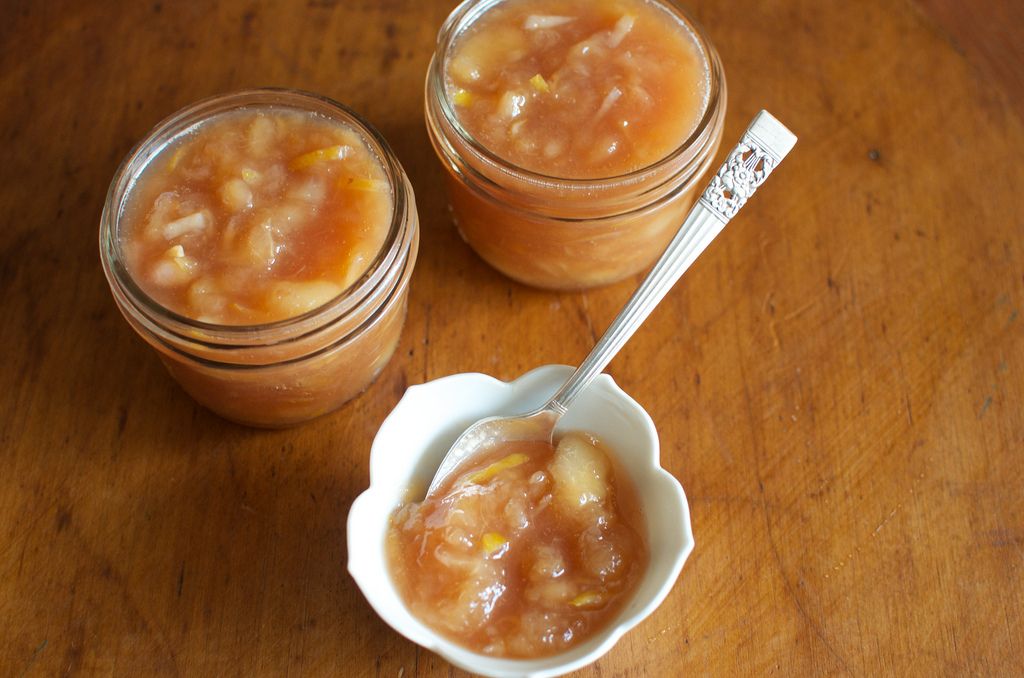
This preserve is particularly good served on toasted baguette rounds with a dab of fresh ricotta cheese. Garnished with a sprig of fresh basil, it’s a tasty starter for summer gatherings.
See the full recipe (and save and print it) here.
Photos by Marisa McClellan










See what other Food52 readers are saying.